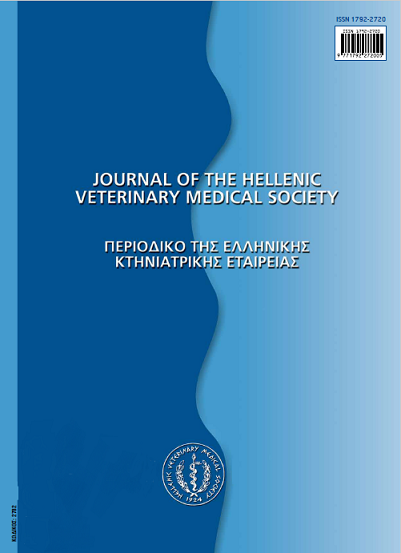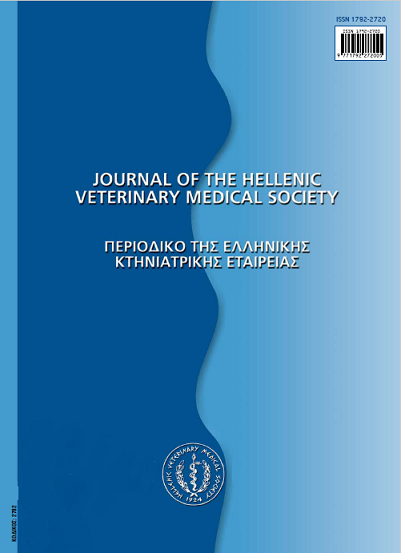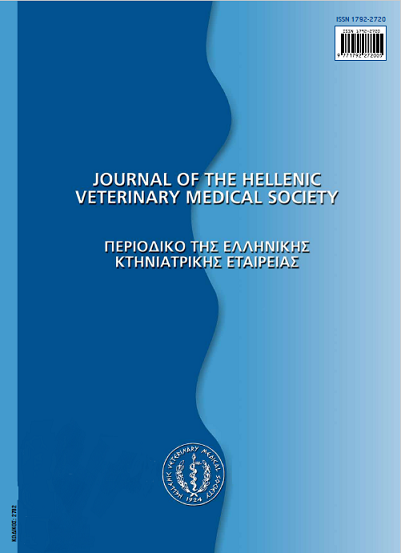Clinical, clinicopathological and diagnostic imaging findings in 14 dogs with suspected fibrocartilaginous embolic myelopathy
Abstract
Fibrocartilaginous embolic myelopathy was diagnosed in 14 dogs with acute neurological dysfunction, based on history, findings of clinical examination, diagnostic imaging evaluation, follow-up and outcome. The dogs were presented with signs of variable involvement of the spinal cord, which were lateralized in 4 cases. The initial clinicopathological evaluation was unremarkable, while cerebrospinal fluid analysis was abnormal in one dog. Diagnostic imaging investigation (plain radiographs of the spinal column and myelography) did not reveal any abnormalities in the vertebrae and adjacent tissues or compression of the spinal cord, with the exception of one case, where there was evidence of focal intramedullary oedema corresponding to the lesion location. Seven dogs improved significantly with supportive treatment; complete remission of clinical signs was evident in two. Moderate improvement was seen in three animals and minimal or no improvement in four dogs, which were euthanised due to persisting neurological incapacitation.
Article Details
- Come citare
-
POLIZOPOULOU (Ζ.Σ. ΠΟΛΥΖΟΠΟΥΛΟΥ) Z. S., KARNEZI (Δ. ΚΑΡΝΕΖΗ) D., & KARNEZI (ΚΑΡΝΕΖΗ Γ.) G. (2017). Clinical, clinicopathological and diagnostic imaging findings in 14 dogs with suspected fibrocartilaginous embolic myelopathy. Journal of the Hellenic Veterinary Medical Society, 63(3), 193–200. https://doi.org/10.12681/jhvms.15433
- Fascicolo
- V. 63 N. 3 (2012)
- Sezione
- Research Articles
Authors who publish with this journal agree to the following terms:
· Authors retain copyright and grant the journal right of first publication with the work simultaneously licensed under a Creative Commons Attribution Non-Commercial License that allows others to share the work with an acknowledgement of the work's authorship and initial publication in this journal.
· Authors are able to enter into separate, additional contractual arrangements for the non-exclusive distribution of the journal's published version of the work (e.g. post it to an institutional repository or publish it in a book), with an acknowledgement of its initial publication in this journal.
· Authors are permitted and encouraged to post their work online (preferably in institutional repositories or on their website) prior to and during the submission process, as it can lead to productive exchanges, as well as earlier and greater citation of published work.










